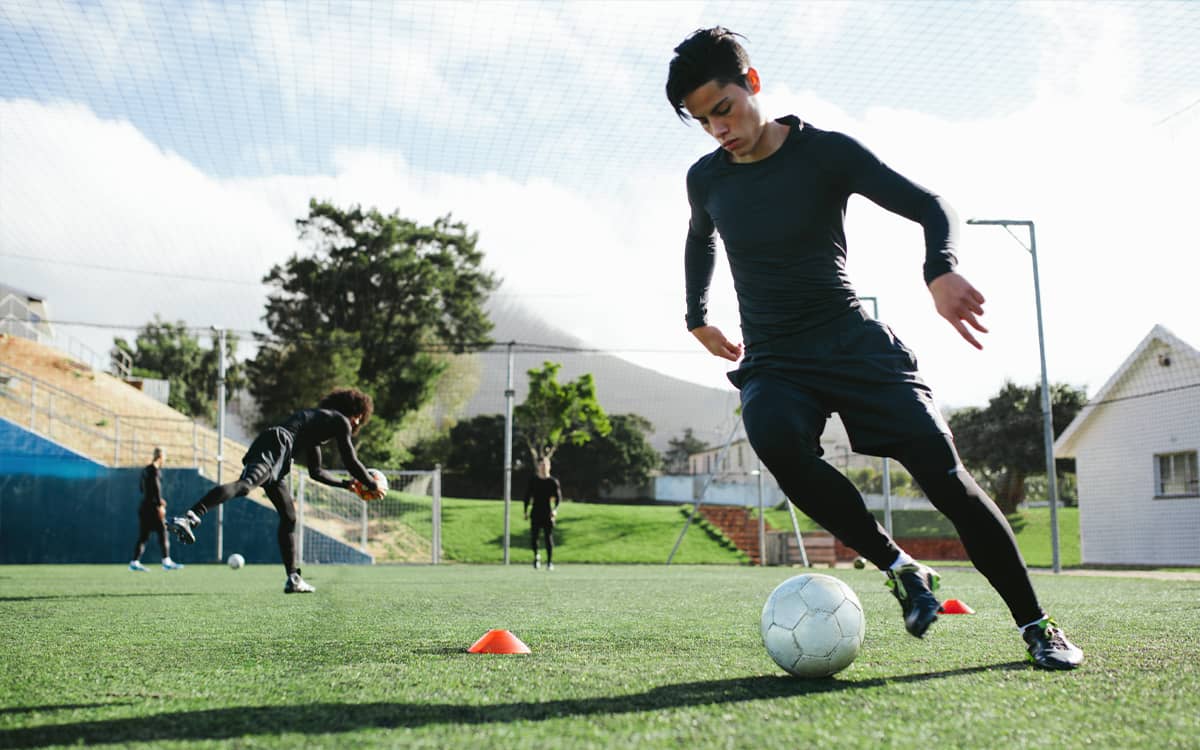Online Guide to Outpatient Joint Replacement
At BoulderCentre for Orthopedics & Spine, our joint replacement doctors are proud to offer outpatient joint replacement through our state-of-the-art ambulatory surgery centers. Outpatient joint replacement allows you to go home usually on the same day as surgery for a comfortable recovery at home.
Our dedicated joint replacement surgeons are specialty-trained in musculoskeletal care and have extensive experience reconstructing major joints, from the shoulder to the ankle. Each member of our team shares a focused expertise in advanced surgical techniques and personalized treatment approaches. We offer a range of tailored options and prioritize your comfort, convenience, and individual needs. From your initial consultation through recovery, our team is committed to relieving your joint pain and helping you regain strength every step of the way.
Our highly trained surgeons are at the forefront of joint replacement care, utilizing the latest and most effective minimally invasive techniques to perform a wide range of same-day, outpatient procedures. These advanced techniques allow many joint replacement surgeries to be performed in an outpatient setting, including:
- Ankle replacement
- Complex knee revision surgery
- Direct anterior hip replacement
- Elbow replacement
- Partial knee replacement
- Robotic-assisted total hip replacement (including MAKOplasty®)
- Robotic-assisted total knee and partial knee replacement
- Total hip replacement
- Total knee replacement
- Total shoulder replacement
At BoulderCentre for Orthopedics & Spine, we strive to help you experience high-quality outpatient orthopedic care guided by our team of experts.
Our Outpatient Joint Replacement Experts
The outpatient joint replacement surgeons at BoulderCentre for Orthopedics & Spine are committed to delivering the highest quality, patient-centered care. With years of experience and extensive training in joint replacement surgery, our experts stay current with leading protocols and utilize the latest minimally invasive techniques to perform efficient and proven outpatient procedures. Dedicated to helping you find the best solution for your joint pain, our surgeons take pride in guiding you back to the activities and lifestyle you love.
Benefits of Outpatient Joint Replacement
Our surgeons perform a wide range of outpatient joint replacement procedures at our surgery centers, including ankle, total shoulder, hip, knee, and anterior hip replacements. These procedures offer patients the following benefits:
![]()
Same-Day Discharge: Most patients are able to begin their recovery at home just hours after surgery.
![]()
Cost-Effective Care: Outpatient joint replacement is often more affordable than procedures performed in a traditional hospital setting.
![]()
Reduced Risk of Infection: Ambulatory surgery centers offer a highly controlled environment that supports a safer recovery process.
![]()
Reduced Risk of Infection: Ambulatory surgery centers offer a highly controlled environment that supports a safer recovery process.
Who Is a Good Candidate?
![]()
Active Lifestyle: You typically lead an active life, but joint pain is limiting your ability to stay engaged.
![]()
Independent Movement: You are generally able to walk on your own or with minimal assistance prior to surgery.
![]()
Good Health Status: You are in overall good health and capable of safely undergoing surgery and participating in postoperative physical therapy.
![]()
Support System at Home: You have reliable help from family or friends to assist you during your recovery at home.
![]()
No Significant Infection History: You have not experienced any serious infections in the past.
What to Expect
Deciding on outpatient joint replacement is a big step! To ensure a smooth surgery and recovery at home, here are some things you can proactively do to prepare.
Preparation
- Discuss your upcoming procedure with your doctor and ask questions to fully understand the surgery and potential risks as well as what to expect during recovery. Be sure to participate in any educational sessions recommended to help you feel confident and well-prepared.
- Before your surgery, prepare your living space to support a smooth recovery. Install grab bars in the bathroom, remove tripping hazards like loose rugs, and arrange furniture to allow easy movement with assistive devices. Stock up on recommended supplies such as ice packs, pain medication, and other essentials your doctor may suggest.
- Having dependable assistance at home is critical in the first few days following surgery. Whether it’s a family member, friend, or home healthcare professional, coordinate their support ahead of time and clearly communicate your needs.
Prehabilitation
- Optimize your health: If you smoke, consider quitting before surgery to support healing and reduce the risk of complications. Inform your doctor about any existing medical conditions so they can be appropriately managed prior to your procedure.
- Build strength and mobility: To enhance your recovery, engage in prehabilitation exercises designed to increase mobility, strength, and flexibility. Your doctor or physical therapist can help create a personalized program that prepares your body for a smoother rehabilitation process.
Compared to traditional surgery, outpatient joint replacement offers the advantages of greater convenience and a quicker recovery. Here’s a general overview of what your day may look like:
- Arrival and Preparation: Upon arriving at the surgery center, you’ll be welcomed by your care team. Nurses will check your vital signs, begin preoperative preparations, and administer any necessary medications to get you ready for surgery.
- Anesthesia: Most patients receive regional anesthesia, which numbs the area around the joint by blocking specific nerves, along with medication to help you relax or lightly sleep. In some cases, general anesthesia may be used to place you in a temporary state of unconsciousness.
- During Surgery: Your surgeon will perform the joint replacement using minimally invasive techniques. An incision will be made to access the joint, and any damaged bone or cartilage will be carefully removed. The artificial implant will then be placed, and the incision closed with sutures or staples. The surgery typically takes a few hours.
- Recovery & Discharge: After the procedure, you’ll be taken to a recovery area where your condition will be closely monitored. Pain management and mobility are key focuses during this time. Once you meet discharge criteria—such as the ability to walk with assistance—you’ll be cleared to return home the same day.
Please keep in mind that this is a general overview. Your care team will provide specific guidance tailored to your needs and explain any individual variations in your treatment plan.
As you begin your recovery at home, your focus will be on rest, pain control, and gradually rebuilding strength and mobility. Here’s what to expect during this important phase:
- Pain Management: Your doctor will prescribe medication to help manage discomfort following surgery. It's essential to follow the prescribed schedule closely and use ice as directed to reduce swelling and keep the incision area comfortable. As you regain strength, physical therapy will also support long-term pain relief.
- Physical Therapy: A physical therapist will begin working with you soon after surgery, guiding you through exercises designed to strengthen the muscles surrounding your new joint. These exercises will evolve as you progress, helping restore your flexibility, range of motion, and overall joint function. Staying consistent with therapy is key to a successful recovery.
- Caring for Your Incision: Proper wound care is crucial. Keep the incision clean and dry and follow your doctor's specific instructions to prevent infection. You’ll be advised on when it’s safe to shower or bathe based on your healing progress.
- Gradual Return to Activity: While rest is necessary, light movement is important to avoid stiffness. You may begin with assistive devices like a walker or cane and slowly transition to independent mobility. Your physical therapist will guide you in safely increasing your activity level and resuming daily tasks.
Recovery takes time and dedication. Celebrate small milestones and don’t be discouraged by occasional setbacks. If you notice signs of concern—such as increased pain, swelling, redness, fever, or drainage from the incision—contact your doctor promptly.
Regaining strength, flexibility, and mobility is a crucial part of your recovery after outpatient joint replacement surgery. Physical therapy plays a central role in this process, and here’s what you can expect:
- Early Start to Recovery: A physical therapist will typically begin working with you within the first day or two after surgery. They will assess your mobility, monitor your pain levels, and guide you through gentle exercises designed to reduce stiffness, promote circulation, and support early movement.
- Personalized Rehabilitation Plan: Your therapist will develop a customized recovery plan tailored to your specific needs and goals. As you progress, the exercises will gradually become more challenging to build strength and improve confidence. You’ll work on stretching, strengthening, and practicing functional movements using assistive devices such as canes or walkers.
- Functional Skill Building: To help restore independence, your therapist will guide you through exercises that mimic everyday activities—such as sitting and standing from a chair, reaching for items, or safely navigating stairs. These practical movements are essential for returning to daily life with confidence.
- Ongoing Support and Progression: Physical therapy usually continues for several weeks or months, depending on your pace of recovery. As your strength improves, sessions may become less frequent, but your therapist will remain available to address concerns and adjust your plan as needed.
Keep your therapist informed about any pain, discomfort, or difficulties you experience during exercises. Honest communication allows your care team to modify your program and ensure your recovery stays safe, effective, and on track.
Recovering at home after outpatient joint replacement will require some temporary changes to your daily routine and living environment. Here’s what you can expect:
- Temporary Activity Restrictions: In the early stages of recovery, you’ll need to avoid strenuous activities and heavy lifting. Your care team will provide clear instructions on movement limitations, including any weight-bearing restrictions, to help you heal safely.
- Creating a Safer Home Environment: Making a few thoughtful modifications to your living space can enhance both safety and comfort. This may include removing throw rugs to prevent tripping, installing grab bars in the bathroom, elevating the toilet seat, or using assistive tools like long-handled reachers to perform everyday tasks more easily.
- Prioritizing Self-Care: Focus on getting plenty of rest and eating balanced, nutritious meals to support your body’s healing process. Enlist the help of family or friends for daily chores so you can conserve your energy for physical therapy and recovery activities.
- Returning to Routine Gradually: As your strength and mobility improve, you’ll slowly resume your regular activities—whether it’s light exercise, social events, or hobbies. Take things at your own pace and listen to your body. Avoid overexertion and celebrate small milestones along the way.
Your doctor and physical therapist are valuable resources throughout your recovery. Don’t hesitate to reach out with any questions, concerns, or changes in your condition. You’re not alone in this process—they’re here to support you every step of the way.
Types of Outpatient Joint Replacement Procedures
As the region’s most preferred orthopedic practice, our nationally recognized specialists deliver outstanding outpatient joint replacement care, personalized to meet your needs every step of the way.

Treatments Include:

Direct Anterior Hip Replacement

Elbow Replacement
Frequently Asked Questions
Outpatient joint replacement is a same-day surgical procedure in which the joint is replaced, and the patient returns home to recover that same day.
Ideal candidates are generally healthy and active, with the ability to move independently, a strong support system at home, and no major history of serious infections.
Work with your doctor to prepare for surgery by learning about the procedure, improving your overall health, creating a safe home environment, and securing dependable support for your recovery.
Your doctor will let you know if any medications need to be paused or adjusted before surgery. In many cases, medications like blood thinners must be stopped in advance.
Prehabilitation can help many patients build strength and flexibility before surgery. Afterward, physical therapy is usually a key part of a smooth and successful recovery.
The procedure typically takes a few hours, depending on which joint is being replaced and how complex the case is.
Recovery can take anywhere from several weeks to a few months, depending on your procedure and progress. Your surgeon will outline a personalized timeline with key milestones along the way.
It’s normal to experience some discomfort after surgery. Your joint care team will help manage it with medication and suggest methods like icing and elevating the joint to ease pain.
Your return-to-work timeline will vary based on the procedure, your job duties, and how well you're healing. Your surgeon will offer guidance tailored to your recovery.
In the first few days to a week after surgery, you’ll likely need help with basic tasks such as getting around, preparing meals, and handling daily routines.
Ensure a safe home environment by clearing tripping hazards, installing grab bars, and placing frequently used items within easy reach. A grabber tool can also help with everyday activities.
Follow-up appointments are usually set within the first one to two weeks after surgery to track your recovery. Make sure to stay in touch with your joint care team and attend all scheduled visits.
Additional Resources
For further information on joint replacement experts, treatment options, and more, please reference the resources at the institutions linked below.



